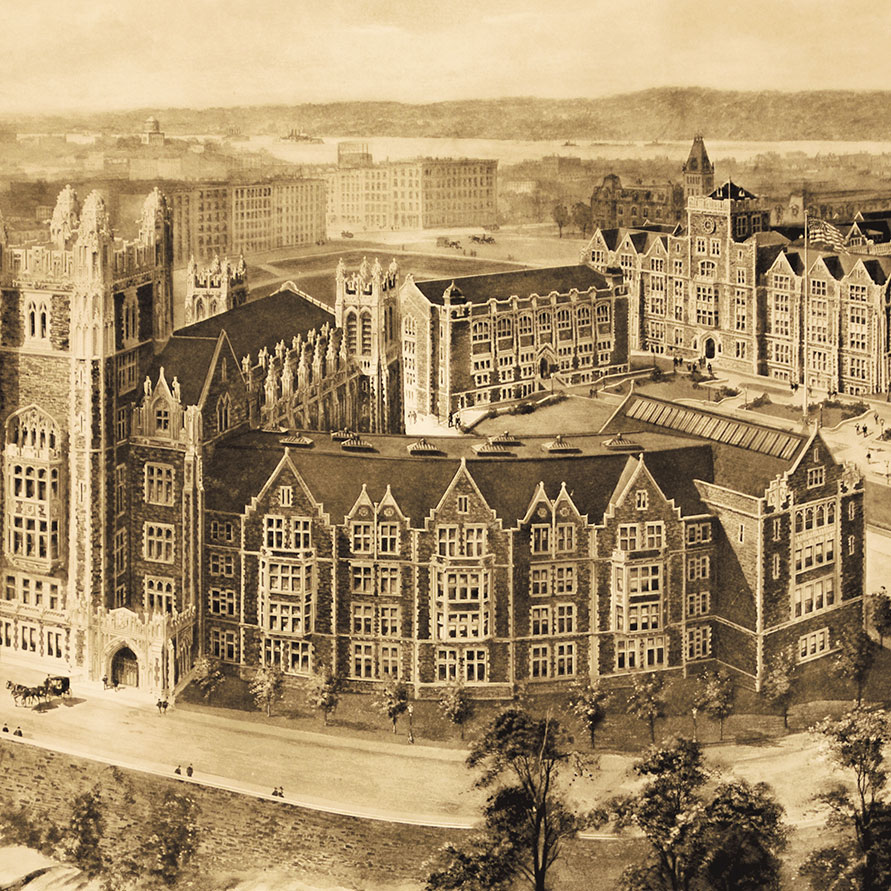The story of The City University of New York is an epic tale — a sweeping story of New York and New Yorkers, and of America, that spans nearly two centuries. It begins in 1847 with the birth of the Free Academy, where “the children of the rich and the poor take their seats together,” in the words of Townsend Harris, CUNY’s visionary founding father. What evolves over the many generations that follow is a great modern university of 25 campuses and half a million students, an Ellis Island of education and driver of upward mobility for New Yorkers of all backgrounds. To this day, CUNY’s motto is a proud expression of its aspirational mission: “The education of free people is the hope of humanity.” This is our story.
— Chancellor Félix V. Matos Rodríguez
1847
It’s the start of the Second Industrial Revolution and New York City has a population of 500,000, many of whom are newly arrived immigrants. Two schools are founded: The Free Academy, later renamed the College of the City of New York, and The Female Normal and High School, opened in 1869 to prepare young women to become teachers. Renamed Hunter College in 1914, it’s the first NYC institution to offer free public higher education to women.
1900
The Move Uptown and New Colleges in the Boroughs
A campus of five neo-Gothic buildings in Upper Manhattan emerges as The College of the City of New York. During World War I, Shepard’s Great Hall is used as quarters for the U.S. Signal Corps. Students and faculty, meanwhile, are at the forefront of political activism. Einstein delivers lectures. Three other colleges follow: Hunter, Brooklyn and Queens. A state-appointed committee urges each of the city’s public colleges to define its own mission.
1946
The GI Bill fuels an enrollment boom. Coeducation arrives at two campuses as CCNY admits women and Hunter opens to men. The community college movement begins to catch fire: Staten Island is the city’s first, followed by Bronx and Queensborough. The school that will later become the New York City College of Technology is founded. Hunter’s Bronx campus–later to become Lehman College–becomes the first home of the United Nations in 1946.
1961
Creation of the Modern University
The City University of New York is formed, uniting seven colleges–eventually to be joined by a dozen more. City College’s esteemed business school becomes its own college, named for Bernard Baruch. A program in that school evolves into John Jay College of Criminal Justice. Manhattan and Brooklyn get their own community colleges. The University Faculty Senate is established. CUNY offers doctoral programs through the new Graduate Center and launches the nation’s first state-funded educational opportunity programs for minority students.
2000
The Macaulay Honors College, Journalism School, Advanced Science Research Center and School of Medicine are founded. CUNY offers its first online baccalaureate degree through the School of Professional Studies. ASAP, the CUNY Service Corps and Cultural Corps are established, along with the Pathways initiative, easing student transfer between CUNY colleges.
TODAY
The City University of New York is the nation’s leading urban public university. The University comprises 25 institutions: 11 senior colleges, seven community colleges, William E. Macaulay Honors College, CUNY Graduate Center, Craig Newmark Graduate School of Journalism, CUNY School of Labor and Urban Studies, CUNY School of Law, CUNY School of Professional Studies and CUNY Graduate School of Public Health and Health Policy. The University serves more than 243,000 degree-seeking students each year.








